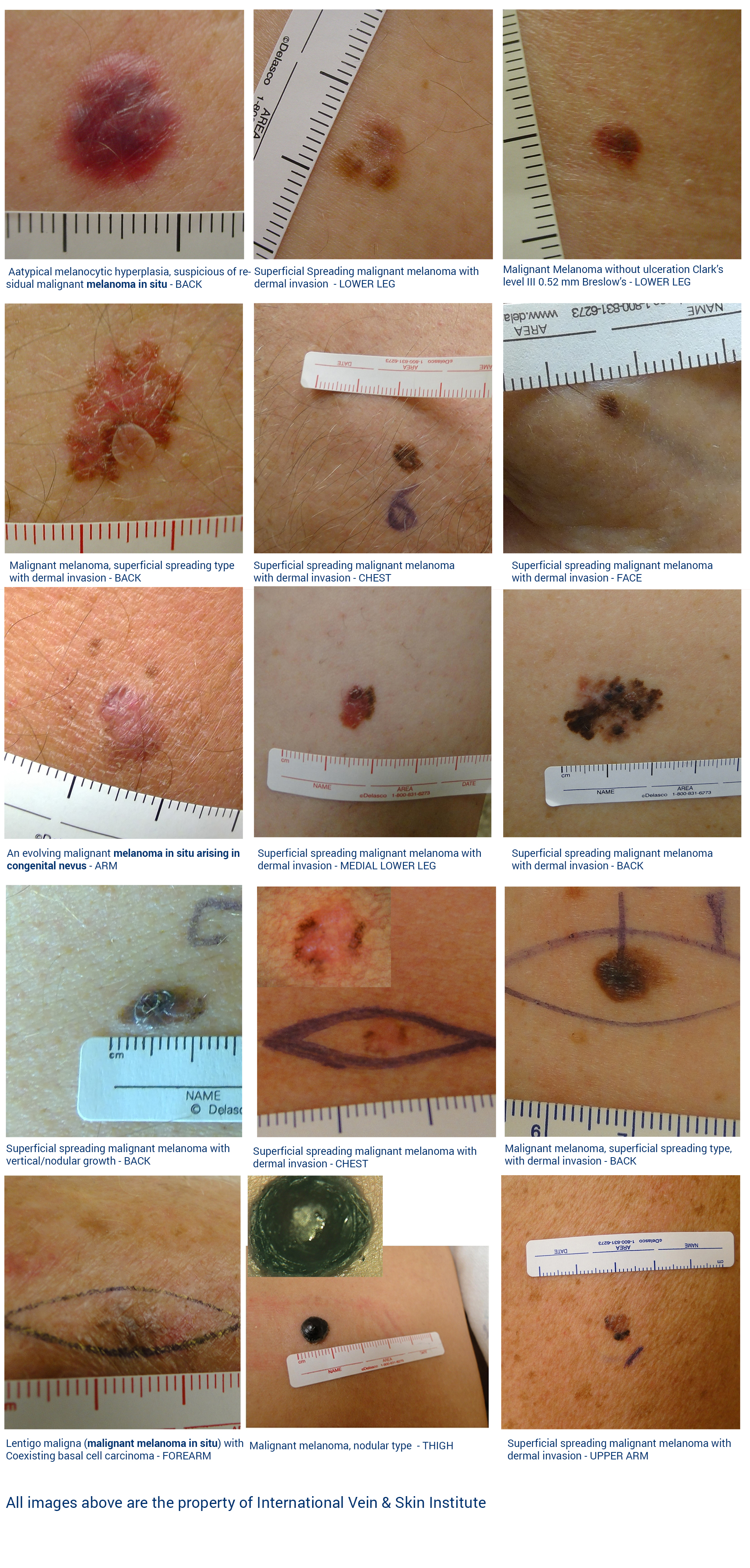SKIN CANCERS
Basal Cell Carcinoma ( BCC)
Basal cell carcinoma is the most common type of skin cancer, that arises
from basal cells
BCC occurs most commonly on the sun-exposed skin of the face, scalp, ears
neck and upper trunk, in people with fair skin ( types I and II).
BCC is usually slow growing, rarely metastasizes but it can be invasive, and if left untreated can lead to significant destruction off tissue and disfigurement.

Frequent Signs and Symptoms: Thera are several types of basal cell carcinoma and each might have different appearance. A basal cell carcinoma is usually presents as slightly raised, irritated skin lesion or sore, which seems to bleed or scab every now and then. It may also be itchy, but it usually doesn't hurt. Nodular BCC might look like a shiny, round papule.
Treatment: Surgical removal of tumor is the most often recommended type of treatment for BCC.
The goal of surgical treatment is to destroy or remove malignant tissue
before it affects larger area, and to preserve function and appearance
of treated area. Depending on size, depth, and location of tumor topical
treatment, radiation therapy or photodynamic therapy might be recommended
to some patients.
Squamous Cell Carcinoma (SCC)
Squamous cell carcinoma is the second, most common cancer arising from
keratinocytes, in the outer layer of the skin or mucosal surfaces or from
actinic keratosis lesions.
As with AK, squamous cell carcinomas typically occur on sun-exposed areas,
and are most commonly found on the head, neck, or hands of elderly patients.
SCC can occur on the lips, inside the mouth, on the genitalia, or anywhere
on the body. SCC is invasive in nature, left untreated can spreads to
the lymph nodes, peripheral nerves and other vital structures.
Frequent Signs and Symptoms: SCC usually looks like a small shallow ulcer with elevated margins or raised crusty, bump on the skin that eventually ulcerates
Early SCC may have the appearance of a hypertrophic actinic keratosis
SCC might also resemble warty lesion
Treatment: Early detection and treatment is important to prevent complications.
Surgical excision with clear margins and Mohs micrographic surgery are
the primary methods of treatment
MALIGNANT MELAMOMA
Melanoma is the most dangerous of skin cancers. It arises form pigment
producing cells called melanocytes.
Melanoma is responsible for majority of skin cancer-related deaths, however
if caught and removed early it is curable.
 Diagnosis of suspicious mole is done by complete excisional biopsy or surgical
excision with wide margins. Further treatment of newly diagnosed melanoma
will be based on pathology findings
Diagnosis of suspicious mole is done by complete excisional biopsy or surgical
excision with wide margins. Further treatment of newly diagnosed melanoma
will be based on pathology findings
For early-stage melanoma complete surgical excision is a definitive treatment.
The most important fact: the majority of patients that were eventually diagnosed with advanced stages of malignant melanoma knew about presence of the skin lesion a long time before their diagnosis was made.
Do wait, if you have questions or concerns about a suspicious mole or dark
spot on your skin,
schedule an appointment for a skin exam with Dr Jozef Tryzno
Call: (847) 518-9999

